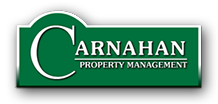Property Management – Canoga Park – Inspections
CANOGA PARK PROPERTY MANAGEMENT
Inspection Tips That Make All the Difference
Commercial and retail property managers have to inspect commercial property frequently to ensure that the tenants are correctly occupying the premises and that the property still performs well on a daily basis. This is all part of the property management process and service provided by real estate agents.
Failure to inspect the property generally leads to problems in one form or another. Tenants can start to do things that are outside of the terms of the lease, and the building starts to fail or require maintenance of one form or another.
As to how frequently you should inspect the premises for the landlord really does depend on:
- How the property is used
- The number of tenants in the building
- The number and type of visitors to the property
- The fees that are being paid for your services
In other words you really have to balance your inspection processes around the demands of the property and the requirements of the landlord.
Many landlords do not fully appreciate the amount of work required to manage a property well. This can lead to low management fees and stressed property managers. Ultimately the landlord and tenants will suffer as the property is poorly maintained. There is a fine balance between property management fees and service. Make sure you get the equation correct. Landlords that want their property managed for a highly discounted fee are not worth working for; everyone suffers.
When inspecting commercial premises you can generally keep to a plan of inspection that includes:
- The exterior of the building, walls and finishes, roof, cladding, drainage etc
- Garden areas, hardstand, roads and paving, common areas in and outside of the property
- Car Park and associated entry points, signage in the car park, safety and security in the car park
- Security factors such as lighting, doors, alarms, fences, locks, and boundaries
- Safety factors such as fire doors, exit and emergency doors, fire safety equipment, hose reels, hydrants, and fire stairs.
- Directory boards and other tenant signage or business identification.
- Lifts and stairs that are used by tenants and customers to the property
- The tenant areas and leased areas used by occupants
- Common areas such as tea rooms, toilets, showers, and corridors
- Glazing and glass cleaning
- Mechanical plant and machinery areas including air conditioning and switchboards, risers that carry connections between zones and floors of the building
From this list it is important to list your findings on a written record of the inspection. Many times work will be generated from the inspection and require follow up; your notes are critical to the process. Take a camera with you to record the condition and presentation in the areas.
Most managed properties would be inspected at least once a month if they are free standing and single tenant occupancy (for example an industrial property). If the property is however of a complex and multi-tenant occupancy (office or retail property) you could inspect the property at least weekly. As a commercial property manager, the more you involve tenants in your inspection process, the better the levels of trust and tenant relations that are generated.
By John Highman
Since 1946 the Carnahan name has had a reputation for honest and ethical Real Estate Property Management services in the San Fernando Valley, Santa Clarita Valley, Burbank/Glendale, Los Angeles, Westside and Conejo Valley areas.
The reason for our success is helping owners like you when they need it. Below is a partial list of property management services we provide to help you protect your real estate investment.
- Tenant placement
- Tenant screening (including: credit check, landlord and employment verification, social security trace report, California eviction check and criminal check)
- Regular property inspections
- Accounting and landlord bill payment
- Monthly financial reporting
- Maintenance service and supervision (we use only proven independent vendors)
- Collections
- Evictions
- We supply all the necessary forms to meet California’s Landlord/Tenant laws
- 24 hour emergency phone service
- Advertising to the broadest tenant base possible
Call or e-mail us today for more information. We’re ready to get started!



